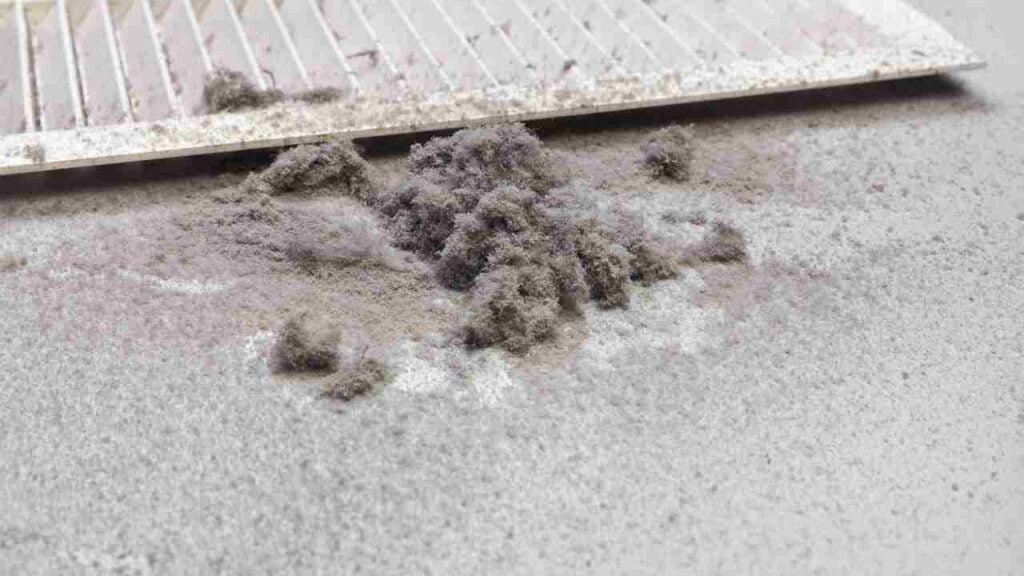
Are you ready to take on the challenge of cleaning fiberglass air ducts like a pro? If you’re passionate about maintaining a fresh and healthy home environment, this guide is tailor-made for you. We all know that clean air ducts play a vital role in ensuring optimal air quality, and I’m here to walk you through the step-by-step process of achieving sparkling clean ducts.
So, wear your cleaning gloves and get ready to dive into the fiberglass air duct cleaning world. It’s time to tackle those hidden dust bunnies and breathe in the crisp, clean air you deserve.
Gathering Supplies:
Before embarking on your fiberglass air duct cleaning adventure, it’s essential to gather all the necessary supplies. Here’s a handy checklist to ensure you’re well-prepared:
- Vacuum Cleaner with Brush Attachment: Opt for a vacuum cleaner equipped with a brush attachment. This will help you effectively remove dust and debris from the air ducts.
- Soft Cloth or Sponge: You’ll need a soft cloth or sponge to wipe down the interior surfaces of the ducts. Look for a non-abrasive option to avoid any damage.
- Mild Dish Soap: Choose a gentle dish soap on the ducts but effective in cutting through grime and grease.
- Warm Water: You’ll need warm water to mix with the dish soap for a cleaning solution.
- Patience: Cleaning fiberglass air ducts requires a bit of time and patience. Prepare yourself mentally for the task ahead, and remember that a thorough cleaning is worth the effort.
Preparing for Cleaning:
Before cleaning your fiberglass air ducts, taking a few preparatory steps is important. These preparations will ensure a smooth and efficient cleaning experience. So, let’s get started:
1. Turn off the Heating or Cooling System:
Prioritize safety by turning off your heating or cooling system before you begin cleaning. This prevents any unexpected bursts of air that might disrupt your cleaning process or even pose a risk.
2. Locate Air Vents Connected to Fiberglass Air Ducts:
Take a moment to identify the air vents that are connected to the fiberglass air ducts you plan to clean. These vents are usually located on walls, ceilings, or floors. Familiarize yourself with their positions before proceeding.
3. Create a Clean and Organized Workspace:
Clear the area around the vents and create a clean and organized workspace. Remove any obstacles or objects that might hinder your access to the ducts. This will allow you to move freely and work efficiently throughout cleaning.
Cleaning the Vent Covers:
Now that you’re all set up and prepared, it’s time to focus on cleaning the vent covers connected to your fiberglass air ducts. This vent covers contribute to your home’s aesthetics and play a crucial role in maintaining proper airflow. Let’s dive into the process:
1. Remove the Vent Covers:
Start by gently removing the vent covers from the air ducts. Depending on the type of vent covers you have, you may need to unscrew them or lift them off. Take care not to damage the covers or surrounding surfaces during this step.
2. Wipe with a Damp Cloth:
Grab a damp cloth or sponge once the vent covers are removed. Use it to wipe down the covers, removing any visible dust or debris. Pay attention to all the nooks and crannies, ensuring a thorough clean. If necessary, rinse the cloth or sponge until the vent covers are dirt-free.
3. Let Them Dry:
After wiping down the vent covers, allow them to air dry completely before reattaching them. This will prevent any moisture from being trapped inside, which could lead to mold or mildew growth.
4. Optional: Consider Deep Cleaning:
If your vent covers are particularly dirty or greasy, you may consider giving them a more thorough clean. You can soak them in warm water and mild dish soap for a few minutes. Then, scrub gently with a soft brush or toothbrush to remove stubborn grime. Rinse them thoroughly and let them dry before reattaching.
Vacuuming the Air Ducts:
Now that we’ve taken care of the vent covers, it’s time to focus on the main event: vacuuming the fiberglass air ducts themselves. This step will help remove accumulated dust, allergens, and other debris that may have settled inside the ducts. Let’s get started:
1. Attach the Brush Attachment:
Take your trusty vacuum cleaner and attach the brush attachment. This specialized attachment is designed to capture dust and debris from the ducts effectively.
2. Maneuver the Brush Attachment:
Carefully insert the brush attachment into the air duct, extending it as far as possible. Move the brush attachment back and forth gently, sweepingly, covering the entire duct length. This action will dislodge any dust or debris clinging to the duct walls.
3. Pay Attention to Nooks and Crannies:
Pay extra attention to the nooks and crannies within the ducts as you vacuum. These areas are notorious for accumulating dust and may require more thorough cleaning. Use the brush attachment to reach tight spaces and ensure a comprehensive clean.
4. Repeat the Process for Each Duct:
Continue this vacuuming process for each air duct in your system. Take your time and be thorough. It’s essential to cover all the ducts to achieve the best results.
5. Empty the Vacuum:
Regularly check and empty the vacuum cleaner canister or bag as needed. This will prevent any loss of suction power and ensure optimal cleaning efficiency throughout the process.
Wiping Down the Duct Surfaces:
Now that we’ve tackled the vacuuming stage, it’s time to shift our focus to wiping down the surfaces of your fiberglass air ducts. This step will help remove any remaining dirt, grime, or residue the vacuuming might have missed. Let’s dive in:
- Prepare a Cleaning Solution: Mix a small amount of mild dish soap with warm water in a bucket or basin. Create a soapy solution that is gentle yet effective in cutting through any stubborn grime.
- Dip the Cloth or Sponge: Dip a soft cloth or sponge into the soapy solution. Make sure to wring out any excess water, as you want the cloth or sponge to be damp but not dripping.
- Gently Wipe the Duct Surfaces: Begin wiping down the interior surfaces of the fiberglass air ducts with a damp cloth or sponge. Work methodically, covering one section at a time. Use gentle, circular motions to lift away any remaining dirt or residue.
- Pay Attention to Stubborn Spots: If you encounter stubborn spots or areas with particularly tough stains, apply more pressure while wiping. Be careful not to scrub too vigorously, which may damage the duct surfaces.
- Rinse with Clean Water: Once you’ve wiped down the duct surfaces, rinse the cloth or sponge with clean water. Go over the ducts again, using a damp cloth or sponge to remove any soapy residue. Rinse the cloth or sponge as needed during this process.
- Thoroughly Dry the Ducts: After rinsing, take a dry cloth or towel and thoroughly dry the duct surfaces. This step is crucial as it helps prevent mold or mildew growth. Ensure that the ducts are completely dry before reassembling the vent covers.
Rinsing and Drying:
After successfully wiping down the surfaces of your fiberglass air ducts, performing a final rinsing and drying step is important. This will ensure the removal of any lingering soap residue and help prevent mold or mildew growth. Let’s proceed with the following:
1. Rinse with Clean Water:
Take a clean cloth or sponge and rinse it with clean water. Remove any excess soap residue from the cloth or sponge before proceeding.
2. Wipe Down the Duct Surfaces Again:
Go over the duct surfaces again using the damp cloth or sponge rinsed with clean water. This final wipe-down will ensure that all traces of soap residue are thoroughly removed. Pay attention to every nook and cranny, leaving no area untouched.
3. Check for Soap Residue:
Watch for any signs of lingering soap residue as you wipe down the duct surfaces. If you notice any slippery or soapy areas, repeat the rinsing and wiping process until the surfaces are completely residue-free.
4. Thoroughly Dry the Ducts:
Once the rinsing process is complete, it’s time to dry the ducts thoroughly. Take a dry cloth or towel and carefully dry the surfaces of the air ducts. Pay attention to corners, edges, and any areas where moisture may have accumulated.
5. Allow Sufficient Drying Time:
It’s crucial to allow sufficient drying time for the air ducts before reassembling the vent covers. This will help prevent the growth of mold or mildew. Ensure the ducts are completely dry before moving on to the next step.
Reassembling and Maintenance:
With your fiberglass air ducts now completely cleaned and dried, it’s time to reassemble everything and discuss the importance of ongoing maintenance. Let’s wrap things up:
1. Reattach the Vent Covers:
Carefully reattach the vent covers to their air ducts. Ensure they are securely in place, which will help maintain proper airflow and prevent any unwanted debris from entering the ducts.
2. Double-Check Connections:
Take a moment to double-check that all the connections between the air ducts and vent covers are secure. This will help avoid any air leaks or inefficiencies in the system.
3. Regular Cleaning Schedule:
Maintaining clean air ducts is an ongoing process. Establishing a regular cleaning schedule is recommended to prevent dust, allergens, and other debris accumulation. Generally, cleaning your fiberglass air ducts at least once a year is a good practice, but you may want to adjust the frequency based on the specific needs of your home.
4. Monitor Air Quality:
As you go about your daily routine, pay attention to the air quality in your home. If you notice an increase in dust, a musty smell, or a decline in air circulation, it may indicate that your air ducts require cleaning sooner than expected. Stay vigilant and address any issues promptly to maintain a healthy living environment.
5. Professional Maintenance:
While regular cleaning is important, it’s also advisable to consider professional air duct maintenance periodically. Hiring a professional HVAC technician can ensure a more comprehensive inspection and cleaning of your ducts, including areas that may be difficult for you to reach.
Conclusion:
In conclusion, following the steps outlined in this guide, you’re well-equipped to confidently conquer cleaning fiberglass air ducts.
You’ve learned how to thoroughly and effectively clean, from gathering the necessary supplies to reassembling the vent covers. By maintaining clean air ducts, you’re ensuring a healthier living environment with improved air quality.
Remember to establish a regular cleaning schedule and stay vigilant for any signs that your air ducts may need attention. Whether you tackle the cleaning yourself or enlist the help of professionals, the effort you put into maintaining your air ducts will pay off in the form of cleaner, fresher air circulating throughout your home.
So take a deep breath and enjoy the benefits of a well-maintained HVAC system and the joy of breathing in that crisp, clean air.
